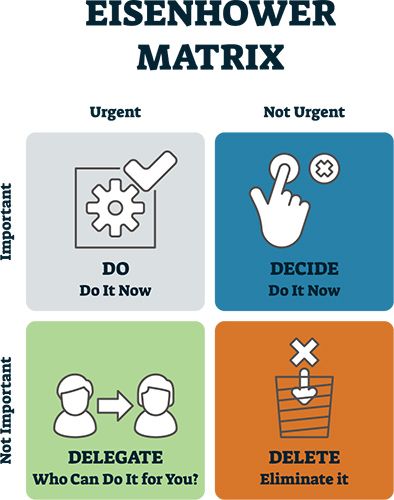Time Management: Urgent Important

WOW! I can’t believe it has already been a month since we last talked. I am going to pick up where we left off last month. If you recall, or if you are just joining us, we decided that the first thing we needed to do was to understand the things or activities that we were spending our time on. Easy enough, right? I decided that I needed to do the same. It has been several years since I have really tracked what tasks and activities that I am spending my time on each day. I realized after tracking for two and a half weeks, that I really didn’t have a set schedule of things. I was doing a lot of activities, but none of them on a scheduled basis. The last few weeks, I was on the road teaching (which I love). It is hard to capture all that we do in a days’ time, let alone a week or month, especially when traveling for work. When we travel, it is critical to understand our time, or we will spend each night in the hotel trying to catch up on our regular activities. We will talk more in-depth later in this series for those of us that find travel is a big part of our jobs.
After figuring out the things we are doing during our days, we must see how much time we are spending on them as well as start to prioritize them. It is important that we understand how to carve out some of our day for the things we want to do. We have 24 hours each day, regardless of what we do, so we must understand what we are doing and how long we are spending on each activity. So, keep tracking what you do each day and start adding in the time that you are spending on it. Track each day, but each Friday, sit down and try to prioritize your tasks. Over the years, I have found the Eisenhower Decision Matrix helpful and I want to share it with you.
The Eisenhower Decision Matrix is simply four quadrants:
- Quadrant 1 - urgent and important
- Quadrant 2 - not urgent but important
- Quadrant 3 - not important but urgent
- Quadrant 4 - not important and not urgent

While using this tool, everyone’s matrix will look different as to the content or criteria we use to help us understand each of our daily activities. Mine will look a lot different than yours. Next month, we will learn how to write these criteria for yourself. Remember, all I need for you to do this month is capture the times and the importance of each activity. Don’t be surprised if everything comes up important and urgent. We wear a lot of hats and our time is at great demand from others. Everything is of importance and urgent to others; that is why looking at the time we are spending on each activity is so critical. Some things we won’t be able to change much, but after understanding how much time we spend on them, we will see the opportunities to steal a minute here and there, and before long we have thirty of those little minutes. It doesn’t sound like much, but what would you give for thirty minutes a day to do the things YOU want to do?
I look forward to continuing to hear from all of you that have already reached out to me, and I hope more of you reading this will reach out. If you are joining late, no worries, contact me, and I will be more than glad to catch you up. Marshall Institute values your success!
